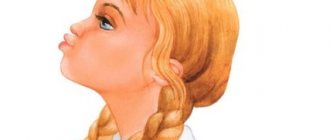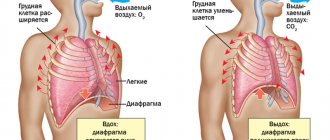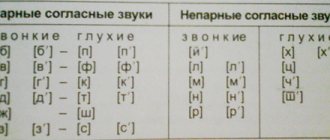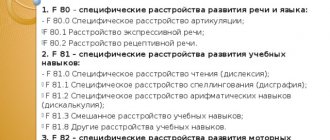Alalia is a severe delay in the development of a child’s speech, not caused by a decrease in hearing or intelligence. It is customary to distinguish sensory and motor forms of alalia. With sensory alalia, speech understanding is impaired, with motor alalia, the pronunciation of words and phrases is impaired. But sensorimotor alalia is more common.
The mechanism of sensorimotor alalia is still not fully understood. Many experts consider this diagnosis to be lifelong. But alalia can be defeated if you work comprehensively with all neurological dysfunctions.
The Prognoz clinic has been successfully doing this for more than 30 years, which is why our center is often called the alalia clinic.
Treatment of motor and sensory alalia in St. Petersburg, at the Prognoz clinic
- First, a comprehensive neurological examination is carried out using modern equipment, consultation with a neurologist and speech therapist.
- Based on the diagnostic results, experienced specialists create a rehabilitation course.
- Children undergo an intensive course of individual lessons and procedures, lasting 16 days.
Based on the diagnostic results, the following treatment methods can be prescribed:
- training using the Alfred Tomatis method (Besson of Switzerland)
- inTime
- massage
- Neurodynamic gymnastics
- Classes with a speech therapist using verbotonal equipment
- TCMP
- RTMS
- physiotherapy
and other techniques, which you can read about in the “techniques” section
Diagnosis and help with alalia:
The optimal time for diagnosis is 2.5-3 years. During this period, speech is normally sufficiently developed to detect impairments, but a secondary impairment of intellectual development has not yet arisen or is mildly expressed. In younger children, the disease can only be suspected, since the rate of development of speech skills in this period can vary greatly.
First, you need to consult a speech therapist and a psychiatrist. Our Center practices a consultation-based initial examination. Based on the diagnostic results of the child’s current condition and the suspected causes of the speech disorder, a neurological examination may be prescribed, as well as additional diagnostic measures (Neurotest blood test, EEG).
The treatment program, according to indications determined by specialists, includes regular play speech therapy sessions (logorhythmics for children), play and sand therapy as sensory, kinesthetic and speech stimulation. If necessary, the doctor prescribes drug therapy, physiotherapeutic treatment, and massage.
The specialist will also determine the need for family-parent consultations, help analyze family relationships and see something very important, something that cannot be seen while inside the family system.
Why does this help?
- We work with specific disorders in the child’s brain that are identified through objective diagnostics.
- Uses a combination of hardware and non-hardware methods
- A combination of drug and non-drug treatment is used
- The clinic’s specialists have extensive experience in helping children with alalia; we use the most effective methods that give quick results
- Doctors and teachers work as one team.
Regular sessions with a speech therapist are necessary, but a child can study for years and still remain an alalik.
Help your child speak and get rid of this diagnosis, contact the Prognoz clinic Leave a request
Request a call
How does alalia manifest itself?
The diagnosis of alalia usually occurs after 3 years. A child with alalia either does not speak at all or speaks “in his own language.” Often children with alalia exhibit some behavioral traits similar to autism.
Some of the children with alalia communicate with adults by inventing their own gestures. There are children who avoid communicating with other children because they understand that they cannot speak.
Sometimes alalia is accompanied by impaired coordination of movements and dyspraxia.
Sensory alalia - about ways to overcome it
Sensory alalia is one of the speech disorders in childhood, which is difficult to diagnose and correct. Special literature refers to the term “sensory alalia” as a sharp limitation or lack of understanding of speech by children whose hearing acuity and intellectual capabilities are sufficiently well developed. Despite the preserved abilities for the development of active speech and fairly good hearing, children with sensory alalia are characterized by the presence between the sound of words and their meaning, and, consequently, impairments in understanding the speech of others. Such children do not understand speech, do not use it, and this leads to accompanying disorders - difficulties in contact, distortion of visual perception and lack of communication with others, delayed intellectual development, etc. Such a child may be given an incorrect diagnosis: autism, hearing loss, mental retardation, etc., and accordingly, completely inadequate correction is offered.
The insufficiency of a unified judgment about the nature and nature of speech pathology of this form leads to diagnostic errors, creating enormous difficulties in pedagogical practice.
Conducted by S.I. Kaydanova and Traugott N.N. Research suggests that sensory alalia manifests a special state of the auditory analyzers, characterized by weakness of inhibitory and excitatory processes, as well as mild generalization (irregular perception of sounds that are accessible to children’s physical hearing).
The main distinctive feature of hearing function in sensory alalia is the ease of occurrence of extreme inhibition due to high functional exhaustion. It is difficult to answer the question of why such exhaustion of the auditory analyzers manifests itself; among the versions one can name the inferiority of the functionality of the peripheral section or the central section of the auditory analyzer. There is evidence that indicates the presence of sensory alalia leading to hearing loss - damage to the peripheral part of the auditory analyzers.
With sensory alalia, an unusual speech hearing defect manifests itself in the fact that the child is inattentive to sounds; sometimes he hears a quiet sound, sometimes he does not react at all to the sound stimulus, he learns individual words with great difficulty and with difficulty retains them in memory, his passive vocabulary is slowly enriched, a gap appears between the named object and the understanding of the word denoting it. Also, with sensory alalia, there is a reduced ability to distinguish the sound of phonemes from surrounding speech, a lack of ability to distinguish correlating phonemes by ear, etc. The child has poor hearing ability to differentiate individual phonemes that are similar in acoustic parameters; when the teacher’s (speaker’s) voice is raised, sound discrimination does not improve significantly; phoneme discrimination improves in the process of learning to read and write and speak, that is, in the process that develops phonemic hearing.
In the works of Traugott N.N. It is said that children with sensory alalia may have high speech activity. And in fact, it is often difficult to stop the flow of speech and achieve listening to the speech of others (in many cases, echolalia is noted). The child listens with pleasure to his voice, his speech and his intonation. Alalik’s speech has an expressive intonation, is richly modulated, he accompanies it with lively gestures and facial expressions and literally “hampers” the understanding of both his own speech and the speech of those around him.
When it comes to a child’s impairment of auditory attention, he does not use his hearing at all or uses it in rare conditions of overmotivation (listens and hears), if he really needs to hear and understand something. As we said earlier, such disorders are quite typical for children with sensory alalia (however, not only for them).
To summarize, it can be noted that children suffering from sensory alalia have impairments not in the very ability to develop speech, but mainly or exclusively in the ability to learn speech from the ear. This factor determines the specifics of correctional activities with a child from this category, as well as with a child with a pronounced sensory component.
If we talk about the auditory-verbal development of such children, the prognosis depends on numerous factors. What matters is the nature and severity of sensory impairments, the level of hearing loss, as well as the severity of violations of higher analysis and synthesis of the auditory analyzer, the ability to imitate speech sounds, characterological and personal aspects, characteristics of intelligence, conditions of education, development and correction.
To understand the nature of auditory-speech characteristics in a child suffering from sensory alalia, it is advisable to differentiate the symptoms that are characteristic of sensory alalia with hearing loss that manifests itself in the pre-speech period.
The importance of normal hearing in the formation of a child’s speech is undeniable; for this reason, in any cases of speech development disorders, first of all, a thorough study of the child’s auditory functions is required. We also emphasize the need for pure-tone audiometry, because a hearing analysis based only on testing whispered and spoken speech can lead to an erroneous conclusion about the presence of central disorders such as alalia in the baby.
It also happens that children suffering from sensory alalia are diagnosed not only with hearing loss, but also with intellectual impairment. And indeed, at first glance, the clinical picture of sensory alalia gives grounds for this. In addition, at certain stages of development, a child with impaired intelligence may be diagnosed with sensory alalia.
Consequently, the sensory component, expressed to varying degrees, can become complications of various disorders of functional and organic (intellectual impairment, hearing loss) origin, and here children with intellectual and hearing impairments constitute the main risk group.
Due to the fact that the main manifestation of sensory alalia is a violation of the synthesis of the auditory-speech analyzer and the processes of higher analysis, the main correction goal should be compensation for this disrupted link.
But, since we cannot develop the suffering function directly, we should form a new functional system using all the intact analyzers by creating additional supports.
The work to overcome sensory alalia, thus, uses motor and visual analyzers, kinesthetic sensations, tactile-vibrational perception, smell, taste, and, naturally, hearing, dosed in the form of a damaged link.
Correctional activities with children who suffer from sensory alalia should include elements of various correctional programs, for example, much is borrowed and adapted from systems of working with children with hearing impairments, as well as from neuropsychological techniques.
Three stages of work:
— The preparatory stage - it includes creating motivation for classes, and then communication needs (the child is included in a group of children).
Due to the fact that speech is considered as a rhythmic space-time structure, these three components are included in these classes. Here we develop general sensory skills, auditory, visual, kinesthetic and tactile-vibrational perception, touch and smell. This way we get the opportunity to develop all the basic skills and functions that precede and accompany speech development in ontogenesis in a normally developing child.
Work on sequence, series, color, quantitative element and other elementary concepts, which will subsequently form the basis of writing, reading and counting, is carried out before working on the elements of global reading with articulatory support and sound analysis.
2 – Main stage – represents work on phase speech, as well as its grammatical design. At the first couple of stages, work on auditory perception is carried out only in music classes, as well as in a group.
3 – Final stage – we work on auditory perception, automation and differentiation of sounds, we also work on complex grammatical structures.
At all of these stages (of course, in different ways), motor and visual supports are actively used, and vocabulary work is also carried out.
The experience of specialists suggests that these methodological techniques, which are aimed at developing the processes of higher analysis, as well as the synthesis of an auditory-speech analyzer and the creation of a new functional system using all types of intact analyzers, make it possible, in case of sensory alalia, to successfully compensate for auditory-speech process disorders.
In addition, this comprehensive approach is also effective for other types of speech and hearing disorders (dyslalia, dysarthria, complex disorders, etc.).
Motor alalia
With this disease, children, as a rule, do not speak at all, or speak quietly and their speech is slurred. At the same time, they fully understand what other people are telling them, and if necessary, they can prove this using gestures.
Symptoms of motor alalia:
active facial expressions and gestures;
due to a limited vocabulary, the child often does not understand what is being said to him;
lack of speech or slurred pronunciation of sounds;
fatigue, inability to work, mood swings;
violation of fine motor skills.
The most severe form of the disease is sensorimotor alalia. With this form, the child cannot understand what is being said to him and cannot say anything.
Sensory alalia is easier to treat than motor alalia.
Physiotherapy
Physiotherapeutic methods are aimed at strengthening the body and stimulating the nervous system. These include water treatment (mechanical, temperature or other effects on the body), ultrasound treatment, magnetic field, weak electrical impulses, etc. In any case, regardless of the methods used, the correction must be comprehensive and systematic. Only a neurologist can prescribe these procedures. Since speech is an important and frequently used skill, parents should perform speech therapy exercises at home on their own as directed by a specialist.









